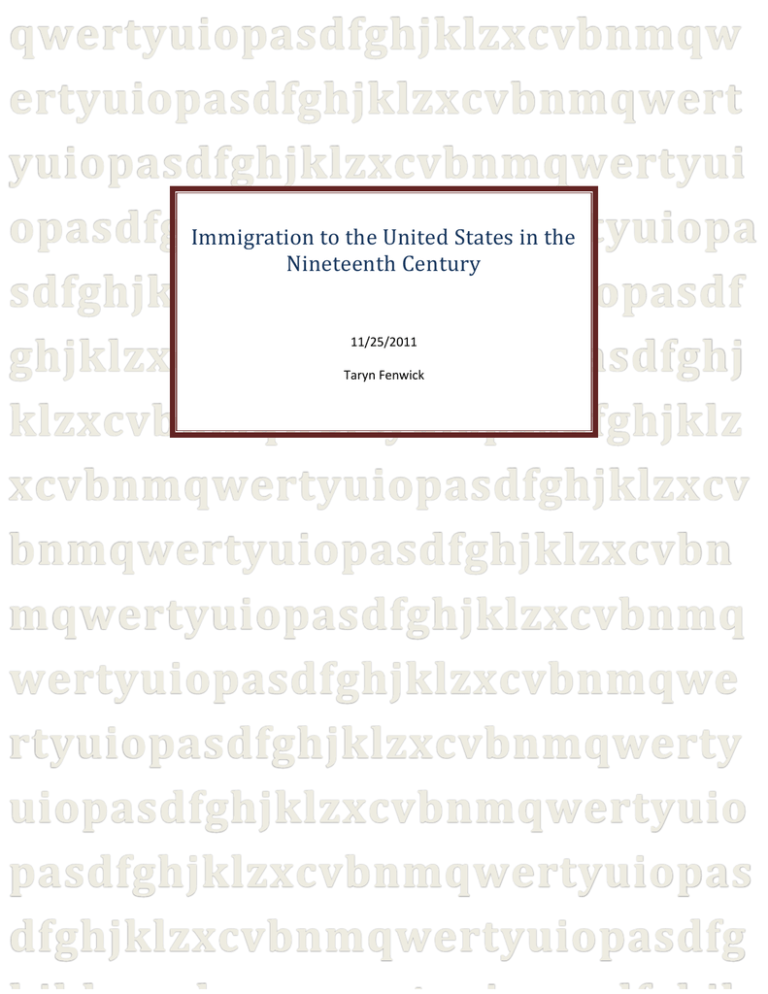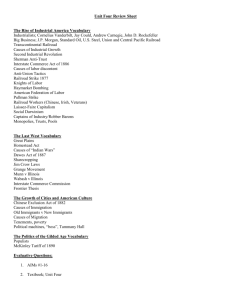Immigration to the United States in the Nineteenth
advertisement

Immigration to the United States in the Nineteenth Century 11/25/2011 Taryn Fenwick Immigration to the United States in the Nineteenth Century The United States is sometimes called the “Nation of Immigrants” because it has received more immigrants than any other country in history. During the first on hundred years of US history, the nation had no immigration laws. Immigration began to climb during the 1830s. “Between 1830-1840, 44% of the immigrates came from Ireland, 30% came from Germany, 15% came from Great Britain, and the remainder came from other European countries.1 The movement to America of millions of immigrants in the century after the 1820s was not simply a flight of impoverished peasants abandoning underdeveloped, backward regions for the riches and unlimited opportunities offered by the American economy. People did not move randomly to America but emanated from very specific regions at specific times in the nineteenth and twentieth centuries. “It is impossible to understand even the nature of American immigrant communities without appreciating the nature of the world these newcomers left.2 The rate of people leaving Ireland was extremely high in the late 1840s and early 1850s due to overpopulation and to the potato famine of 1846. “By 1850, there were almost one million Irish Catholics in the United States, especially clustered in New York and Massachusetts.3 Germans left their homeland due to severe depression, unemployment, political unrest, and the failure of the liberal revolutionary movement. It was not only the poor people who left their countries, but those in the middle and lower-middle levels of their social structures also left . “Those too poor could seldom afford to go, and the very wealthy had too much of a stake in the homelands to depart.4 1 Lewis Paul Todd and Merle Curti, Rise of the American Nation (New York: Harcourt Brace Jovanovich, Inc., 1972,297) 2 John Bodner, The Transplanted (Bloomington: Indiana University Press, 1985), 54. 3 E. Allen Richardson, Strangers in This Land (New York: The Pilgrim Press, 1988), 6. 4 Richardson, 13. Many immigrants came to America as a result of the lure of new land, in part, the result of the attraction of the frontier. America was in a very real sense the last frontier—a land of diverse peoples that , even under the worst conditions, maintained a way of life that permitted more freedom of belief and action than was held abroad. “While this perception as not entirely based in reality, it was the conviction that was after held in Europe and that became part of the ever-present American Dream.5 5 Richardson, 72. Bibliography Bodner, J. (1985). The Transplanted. Bloomington: Indiana University Press. Curti, L. P. (1972). Rise of the American Nation. New York: Harcourt Brace Jovanovich, Inc. Richardson, E. A. (1988). Strangers in This Land. New York: The Pilgrim.








